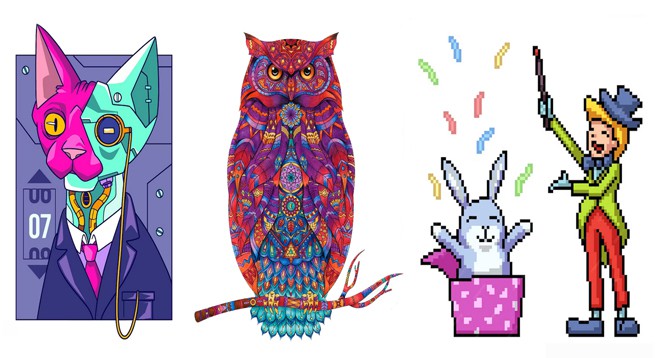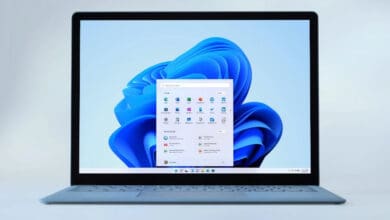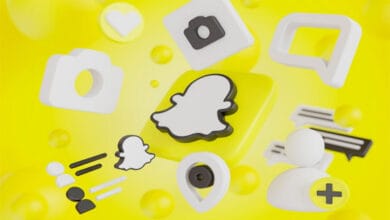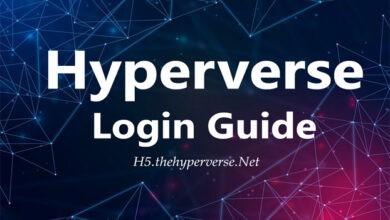
Do you want to learn how to make and sell an NFT? Many artists are considering turning their art into nonfungible tokens (NFTs) to sell their work. NFTs make it possible to sell art digitally by proving ownership of the original digital asset. They also help connect artists with new communities of potential buyers.
NFTs are here to stay and becoming more important to artists despite recent market thefts and hacks. Galleries now display NFT collections in person. Non-fungible means something that cannot be replaced or is unique. NFTs, short for nonfungible tokens, give value to digital items that can be easily copied by making them scarce. They do this by creating a digital register on a blockchain that proves ownership of the original file or item.
NFTs are commonly associated with digital art but can represent various things like videos, music, and even real estate. If you want to learn about non-fungible tokens, check out my feature called “NFT meanings, slang, and terms: all you need to know.” It covers all the terms people use and will help you understand more about NFTs.
To understand how to make and sell an NFT, it’s essential first to understand what NFTs are. So, let’s start by answering the question: What are NFTs? We have guides on NFT drops and spotting fake NFTs, too. You can find answers to common questions in the FAQ section at the bottom of this article. NFTs can also work as books, like the upcoming NFT Broadside.
What are NFTs?
NFT is short for Non-Fungible Token.’ It’s a unique code stored in a blockchain. A digital ledger called blockchain technology keeps a special data unit. This data proves ownership, just like with cryptocurrencies such as bitcoin. It is decentralized and can be easily examined.
Blockchain technology ensures that NFTs cannot be copied, substituted, or divided. It makes it reliable to prove ownership of various digital files like art, music, games, videos, and more. Besides establishing ownership, the technology also prevents copies, which adds scarcity to digital art.
An NFT, similar to physical art, can be sold while the artist keeps the copyright. Alternatively, the artist can transfer the copyright to the buyer or determine the percentage of secondary sales the owner can receive. NFTs are similar to collector’s items, but instead of purchasing a physical object, you buy a file and proof of ownership for the original copy.
What are NFTs used for?
NFTs can represent digital files like art, videos, or real estate. Converting files into ‘tokens’ and storing them on a blockchain simplifies the process of buying, selling, and trading these files. It also enhances efficiency and minimizes the risk of fraud.
To identify the original copy, you can store any easily reproduced digital file as an NFT. NFTs are often associated with incredible futuristic motion artworks, but they can be made from any photography, art, music, or video file. Even tweets and memes are now being turned into NFTs.
How to make and sell an NFT: A word of caution
Many artists are interested in learning how to make and sell NFTs because they’ve seen successful artists like Beeple make big sales, like when he sold his NFT artwork The First 5000 Days for $69 million. Only a small percentage of NFT sales involve such impressive figures. NFT art usually sells for similar prices as other high-quality art. NFTs have a key advantage for digital artists: they can earn royalties on future sales whenever their NFT is sold again. This feature is built into the original smart contract.
One important thing to know is that many fees are associated with making, maintaining, and selling an NFT. Some NFT marketplaces allow fee-free NFT minting, but creators usually have to pay for minting the NFT, regardless of whether they sell it. The buyer is responsible for covering the cost in some instances.
Although the NFT market experienced a slight decline this year, a growing number of artists, illustrators, and designers continue to earn money by selling NFTs. According to Nonfungible.com, sales on the Ethereum blockchain reached over $15 billion in 2021, a significant increase from $67 million the previous year. If you’re interested, let’s explore the basics of creating and selling an NFT. Let’s break down the process and explore NFT marketplaces, NFT crypto, and all the essential information you need.
How to make and sell an NFT – Step by Step
To make and sell an NFT, the first step is to “mint” your NFT. It means you already have the artwork you want to convert into an NFT. You’ll need to do two things to create an NFT of your artwork. First, choose an NFT platform. Second, get a payment wallet. The payment wallet is essential because it pays fees for the NFT platform and receives payments if you sell your NFT. We’ll use Rarible as the NFT platform and MetaMask as our payment wallet to explain the process. However, other options are available, which we’ll mention later in the questions section.
1. Choose a digital wallet
To make and sell an NFT, you’ll require cryptocurrency. To sell your artwork as a non-fungible token (NFT) on most auction platforms, you must pay upfront for the minting process. This process converts your artwork into an NFT. Ether (ETH) is the main cryptocurrency used for payments. It is associated with Ethereum, an open-source blockchain platform where NFTs were first introduced.
Some platforms now accept various payment formats and can generate NFTs using different blockchains. Additionally, some of these platforms are more environmentally friendly. If you have ETH, you’ll need a digital wallet to connect to your NFT payment platform. You can use cryptocurrency exchanges to buy ETH if you don’t have currency. However, the fastest and easiest way is usually to buy it directly using your preferred digital wallet.
You have many options when it comes to NFT payment platforms. Some popular ones include Coinbase, MetaMask, Torus, Portis, WalletConnect, MyEtherWallet, and Fortmatic. We’ll use MetaMask as an example, but you can choose from various platforms. Typically, the process is the same. Before deciding, it’s essential to review and understand the fees involved carefully (we’ll discuss fees in more detail later).
If you want to use a different service or already have a digital wallet and know how it works, skip to step 4. If you need help, we will guide you on setting up your wallet and purchasing ETH in the next step.
2. Create a digital wallet for NFT payments
To create a digital wallet for paying on an NFT platform, follow these steps:
1. Visit MetaMask’s website.
2. Look for the blue ‘Download’ button in the top-right corner.
3. Click on the button to start the download process.
We’ll install the browser extension since we’re on a desktop computer. However, there’s also a mobile app available.
You will be asked to confirm if you want to create a new wallet and seed phrase. Don’t stress about the term ‘seed phrase’ too much. It’s just a list of words that holds blockchain information. Just say yes and agree to the terms to set up your account. Then, create a password and go through some security measures. That’s it! Your account will be ready to use.
3. Add cryptocurrency to your wallet
After setting up your MetaMask wallet or any digital wallet, you should add some ETH. To buy ETH, click the ‘Buy’ button and choose ‘Buy ETH with Wyre’ if you still need an ETH.
You will be directed to a screen where you can choose between using Apple Pay or a debit card to purchase ETH. If you want to avoid spending money right now, you can skip this step and return to it later. Remember that it may be more complicated (you’ll need to check the fees on the NFT platform you choose to know how much you’ll need to buy).
Learning how to make and sell an NFT that can be difficult to understand is how words are used in cryptocurrency. However, getting currency is a simple process. Please note that the value of Ether, like Bitcoin and other cryptocurrencies, can change significantly.
In 2021, the price of 1 ETH has fluctuated between under $1,000 and around $4,700. There have been many ups and downs along the way. The currency price can change by hundreds of US dollars in just a few hours.
4. Connect your wallet to an NFT platform
Digital wallets generally operate in a similar manner. Once you’ve made your selection, you’ll have to link it to the NFT platform where you plan to sell it. We’ll use Rarible as an example, but there are other NFT platforms available. The process we describe will be similar on most platforms.
Visit Rarible.com. On the screen’s right-hand corner, there’s a button labeled ‘Connect wallet.’ To proceed, click on the specified location. On the following screen, you will be prompted to select your wallet provider, which in this situation is MetaMask. You will see a popup that allows you to connect your wallet to Rarible. To proceed, click on ‘Next’ and then ‘Connect’. Make sure to accept the terms of service and confirm that you are over 13 years old.
5. Upload the file you want to turn into an NFT
Now that you have a wallet linked to ETH for payments, you can make and sell an NFT. To start on Rarible, click the blue ‘Create’ button at the site’s top right corner. Afterward, you can either create a single piece or sell the same item multiple times.
For this example, we’ll choose ‘Single’. To turn your digital file into an NFT, upload it. Rarible accepts PNG, GIF, WEBP, MP4, and MP3 files. The maximum file size allowed is 30MB.
6. Set up an auction for your NFT
Next, you’ll need to select how you want to sell your NFT artwork in the following section of the form. You have three choices. With the ‘Fixed price’ option, you can easily set a price for your NFT and sell it immediately, similar to eBay’s ‘Buy it now’ feature. With the ‘Unlimited Auction’ option, you can keep receiving bids until you accept one. A ‘Timed auction’ is an auction that has a fixed duration. We’ll choose that option as an example.
Let’s talk about the trickiest part: deciding on a minimum price. If you sell your NFT for a very low price, the high fees may eat up your profit, and you might lose money. Our price will be 1 ETH, and people will have seven days to bid.
After purchasing, you have the option to unlock it. You can offer your buyer a complete, high-quality version of your art and extra content through a private web page or download link. Below is the option titled Choose Collection; we recommend keeping the default option as ‘Rarible.’
7. Add a description to sell your NFT
You can now add a title and description for your listing. To increase your chances of selling your NFT, it’s essential to take some time and consider a few things. Next, you will be asked to decide the percentage of royalties you want to receive from any future resale of your artwork.
Finding the right balance is essential. A higher percentage means more money per sale in the long term, but it may discourage people from reselling your art because they won’t profit as much. You can also add properties to your file if you want. You’re almost finished now that it’s complete.
8. Pay the listing fee to sell your NFT
To complete making and selling an NFT, click ‘Create Item’. You will then be prompted to connect your wallet and pay the listing fee—no need to worry if you don’t have enough money. You won’t have to start over. To add funds on Rarible, click on the wallet icon in the screen’s top-right corner. From there, you can easily add funds directly to the platform.
The listing fee is only $5.91 in US dollars. But it’s just the beginning. To proceed, you must agree to an additional fee of $42.99 in ETH to generate your NFT. When someone buys your NFT, you’ll need to pay a commission fee on the sale and a transaction fee for transferring the money from the buyer’s wallet to yours.
You have to take a risk and wait to see how much you will be charged if you make a sale. You hope that you will still make a profit in the end. If you’re interested in investing in NFT art, we wish you good luck!
FAQ – How to make and sell an NFT
NFTs can be confusing, with lots of information and misinformation to navigate. Here are common questions about making and selling NFTs.
1. Are NFTs legitimate?
NFTs are legitimate, but the word and its use are so vast that you may encounter frauds and schemes that aren’t. It’s always a good idea to research, never take free NFTs, and avoid anything that seems too good to be true.
2. Why do people buy NFTs?
People buy NFTs for a variety of reasons. Non-fungible tokens are assets to gather, while others consider them investments. Others just like the art or technology of NFTs and enjoy experimenting with how they may be used. People increasingly accept NFTs to launch products, collect funds, and offer marginalized communities a voice. NFTs have the potential to create a new kind of democracy.
3. How can I make money from NFTs?
If you want to make money from NFTs, there are various ways. Here are a few important ways:
Play-to-Earn games: These new games let you own the assets you earn or unlock. You can collect and sell NFTs in a game’s store or marketplace.
Collecting: Lots of people collect NFTs. They find new projects and hold onto them until their value goes up (but it can also go down).
Flipping NFTS: Some people buy NFTs to sell them later for a profit, although I wouldn’t recommend it. It’s a risk.
Investing in new NFTs: If you’re interested in NFTs, finding projects you enjoy and joining them early is essential. You can join the Discord community and be added to the ‘whitelist’ frequently.
Make your NFT: NFTs are successful because anyone with a computer can create them. They can also be used to fund other projects. You can now make NFTs for free, but there are some restrictions.
4. What is minting in NFTs?
Like physical currency, “minting” refers to creating a currency and NFTs on a blockchain. NFTs are commonly found on Ethereum. Minting involves recording data in a secure and unchangeable public ledger. This ledger can track the NFT and its future sales. Minting typically incurs a cost known as the gas fee. However, some marketplaces are finding new ways to charge fees, including being more flexible with when and to whom they are applied.
What is a blockchain?
According to Investopedia, a blockchain is a shared database distributed among computers in a network. Blockchain technology is great because it ensures security and trust without relying on a third party. It also helps to make data transactions faster. Once the data is entered, it cannot be reversed or changed, making it permanent. NFTs allow artists to track their work and earn a percentage from future sales.
Do I need a crypto wallet?
Usually, yes. To mint or buy an NFT, you typically have to pay with cryptocurrency. You’ll need to create a crypto wallet to mint and trade NFTs on most platforms.
Two popular crypto wallets are MetaMask and Coinbase, both known for their security. Specific NFT marketplaces, like Nifty Gateway, now accept payments in regular currency (like US dollars) through credit and debit cards. It makes it simpler for people to buy NFTs.
What are gas fees in NFTs?
The fee you have to pay on the Ethereum blockchain for performing a function, like creating an NFT. Gas fees are measured in gwei and can fluctuate based on blockchain usage. The average charge for a transaction is 0.0042 ETH. To find lower fees, try booking during the early morning hours (1 am-3 am UTC) or late at night (9 pm-11 pm UTC).
Is it possible to avoid gas fees?
Some NFT marketplaces now allow users to mint NFTs without paying gas fees. Some examples are OpenSea and Rarible. This approach makes the buyer responsible for the gas fee instead of the creator. It will be visible in the sale, similar to VAT or the fuel tax added by airlines.
Some blockchains have no or lower gas fees. You can find Polygon on Opensea and ImmutableX on Mintable. Before you mint or buy an NFT, check the fees, the blockchain, and the token being used.
Are there any energy-efficient blockchains available?
NFT marketplaces now have eco-friendly alternatives to energy-intensive Ethereum. Some examples of these are Flow, Tezos, and Polygon. Solana, a new blockchain, is proud to be carbon-neutral. Visit an NFT marketplace and choose one that aligns with your values.
Can anything become an NFT?
Sure! You can store any digital file as an NFT. Many marketplaces focus on digital artwork, but now they also support video, game assets, and music. Physical items, like limited edition Nike trainers and collectibles, are now being turned into digital assets called NFTs. NFTs ensure ownership of the physical object. In the future, NFTs will likely be found in digital and physical spaces.
Where can people sell NFTs?
You can buy and sell NFTs on NFT marketplaces. Some are open to everyone, while others require an invitation. There are different types of stores – some for art, others for video games and other items. There’s an NFT marketplace for everyone. Just do some research to find the best one for you. The top NFT auction platforms are OpenSea, Rarible, SuperRare, Nifty Gateway, Foundation, VIV3, BakerySwap, Axie Marketplace, and NFT ShowRoom.
What do people do with NFTs after they buy them?
Newcomers to the NFT world often wonder what people do with their purchased NFTs. Collectors can either hold onto their items or try to sell them quickly for a profit. You can display NFT art just like any other art.
The top NFT displays are high-resolution screens, either 4K or 5K. The finest ones also feature touch-sensitive anti-glare screens, giving the artwork a canvas-like appearance. Some good examples of screens include The Frame by Samsung and those from Meural and Canvia. Also, search for screens with a built-in NFT marketplace and wallet connectivity through an app.





